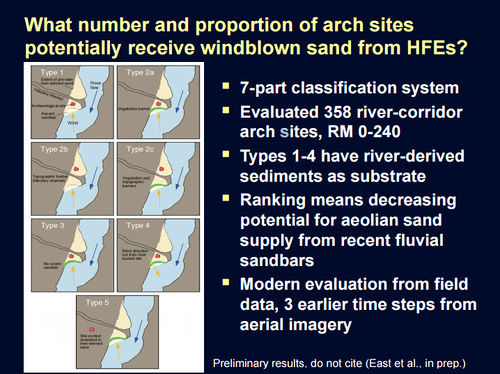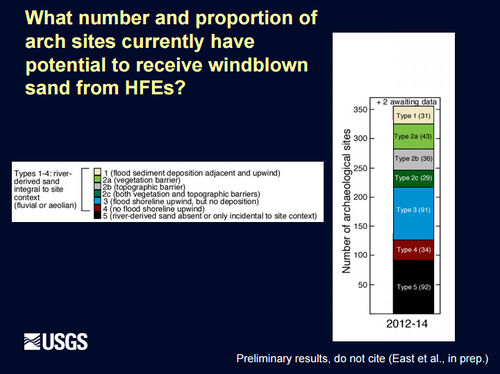Difference between revisions of "Aeolian Sand Transport"
From Glen Canyon Dam AMP
Cellsworth (Talk | contribs) |
Cellsworth (Talk | contribs) |
||
| Line 68: | Line 68: | ||
|- | |- | ||
|style="color:#000;"| | |style="color:#000;"| | ||
| + | |||
| + | '''2017''' | ||
| + | *[https://www.usbr.gov/uc/rm/amp/twg/mtgs/17jan26/AR5_Sankey.pdf Fluvial-aeolian sediment connectivity during the current HFE protocol: alteration on fluvial-aeolian sediment connectivity in Grand Canyon PPT] | ||
'''2016''' | '''2016''' | ||
*[[Media:Collins 2016 GCArchSitesAeolian.pdf| Collins et al. 2016. Relations between rainfall–runoff-induced erosion and aeolian deposition at archaeological sites in a semi-arid dam-controlled river corridor, Earth Surf. Process. Landforms]] | *[[Media:Collins 2016 GCArchSitesAeolian.pdf| Collins et al. 2016. Relations between rainfall–runoff-induced erosion and aeolian deposition at archaeological sites in a semi-arid dam-controlled river corridor, Earth Surf. Process. Landforms]] | ||
*[https://pubs.er.usgs.gov/publication/pp1825 East et. al. 2016. Conditions and processes affecting sand resources at archeological sites in the Colorado River corridor below Glen Canyon Dam, Arizona: U.S. Geological Survey Professional Paper] | *[https://pubs.er.usgs.gov/publication/pp1825 East et. al. 2016. Conditions and processes affecting sand resources at archeological sites in the Colorado River corridor below Glen Canyon Dam, Arizona: U.S. Geological Survey Professional Paper] | ||
| + | |||
| + | '''2015''' | ||
| + | *[http://www.usbr.gov/uc/rm/amp/twg/mtgs/15jan20/Attach_03.pdf Conditions and Processes affecting sand resources at archaeological sites] | ||
'''2014''' | '''2014''' | ||
Revision as of 14:48, 23 March 2017
|
|
|
| --- |
--- |
--- |
|---|
|
|

